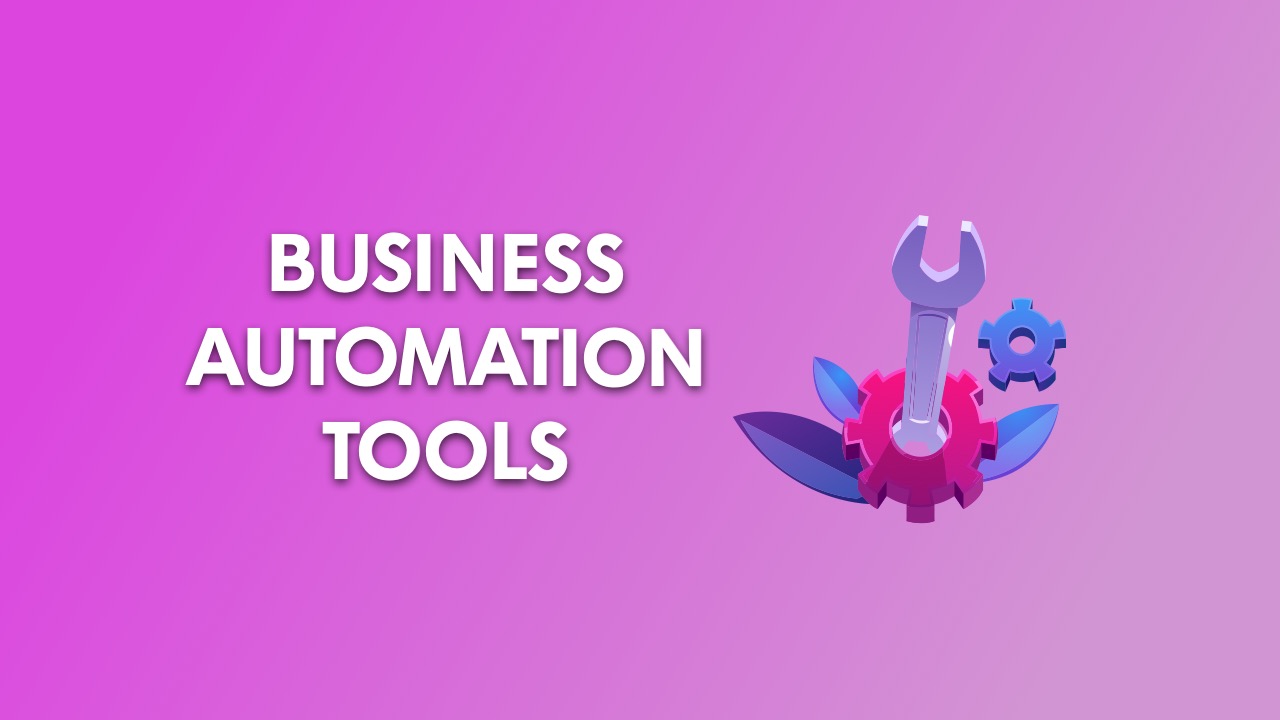In today’s fast-paced digital economy, businesses of all sizes are under increasing pressure to operate more efficiently while keeping costs low. Business automation tools have become essential allies in this mission. By automating repetitive and time-consuming tasks, companies not only reduce operational costs but also improve productivity, accuracy, and employee satisfaction.
In this article, we explore the key business automation tools that can save you time and money, examine how they work, and guide you on how to implement them strategically within your organization.
What is Business Automation?
Business automation is the use of technology to execute recurring tasks or processes in a business where manual effort can be replaced. This includes workflows in finance, marketing, customer service, human resources, sales, and more.
The primary goals of automation include:
- Reducing human error
- Freeing up employee time for higher-value tasks
- Increasing operational speed
- Enhancing customer experiences
- Lowering overall business costs
Categories of Business Automation Tools
Different departments benefit from different types of automation. Let’s break down the tools by function and impact.
Marketing Automation Tools
Marketing automation tools are designed to simplify marketing efforts such as email campaigns, social media scheduling, lead scoring, and customer segmentation.
Popular Tools:
- HubSpot – A comprehensive CRM and marketing automation suite
- Mailchimp – Ideal for email marketing and automated campaigns
- ActiveCampaign – Combines email marketing with CRM and sales automation
- Buffer & Hootsuite – Automate social media scheduling and analytics
Time and Cost Savings:
- Schedule months of campaigns in hours
- Eliminate repetitive social posting
- Automatically segment leads and trigger follow-up emails
Sales Automation Tools
Sales teams benefit immensely from automation tools that reduce manual data entry and streamline lead management.
Popular Tools:
- Salesforce – Market-leading CRM with advanced automation features
- Pipedrive – Sales pipeline automation for small to mid-sized teams
- Outreach.io – Automates prospecting, follow-ups, and cadences
Time and Cost Savings:
- Automatically capture and prioritize leads
- Shorten the sales cycle with workflow automations
- Reduce manual reporting and forecasting
Customer Support Automation
Support automation improves customer experience while lowering the cost per interaction.
Popular Tools:
- Zendesk – Integrates ticketing with AI-powered self-service
- Freshdesk – Enables chatbots and email automation for support teams
- Intercom – Combines live chat, AI bots, and helpdesk automation
Time and Cost Savings:
- Handle 24/7 inquiries without human agents
- Auto-assign tickets to the appropriate department
- Reduce response times and customer churn
Finance and Accounting Automation
Finance is one of the most time-intensive departments. Automation simplifies everything from invoicing to expense tracking and payroll.
Popular Tools:
- QuickBooks – Automates accounting, invoicing, and tax calculations
- Xero – Cloud-based accounting software with strong automation features
- Bill.com – Automates bill payments and accounts payable
- Expensify – Simplifies expense reporting for teams
Time and Cost Savings:
- Minimize manual data entry
- Eliminate errors in bookkeeping
- Accelerate month-end closing
Human Resource Automation
From recruitment to onboarding, HR automation tools help reduce administrative workload and improve the employee experience.
Popular Tools:
- BambooHR – Automates HR workflows, onboarding, and time tracking
- Workday – Enterprise-level HR and payroll automation
- Gusto – Handles payroll, benefits, and compliance for SMBs
Time and Cost Savings:
- Streamline recruitment with automated screening
- Digitize onboarding to improve efficiency
- Ensure compliance with less manual intervention
Project Management Automation
Automation in project management ensures teams meet deadlines without micromanagement.
Popular Tools:
- Asana – Automates task dependencies, reminders, and workflows
- Trello with Butler – Uses rules and triggers to automate boards
- ClickUp – All-in-one project management with built-in automation
Time and Cost Savings:
- Eliminate the need for manual task updates
- Automate deadline alerts and progress reporting
- Ensure smooth collaboration across teams
E-commerce and Inventory Automation
Retailers and e-commerce brands use automation to manage stock, sales, and customer communications.
Popular Tools:
- Shopify Flow – Automates inventory, shipping, and customer engagement
- Oberlo – Automates product imports and order fulfillment
- Zoho Inventory – End-to-end inventory and order automation
Time and Cost Savings:
- Reduce cart abandonment with automated follow-ups
- Minimize overstock and understock issues
- Lower labor costs by streamlining order fulfillment
Workflow Automation and Integration Tools
These tools act as connectors between other apps, ensuring your systems talk to each other.
Popular Tools:
- Zapier – Connects 5,000+ apps with “if-this-then-that” logic
- Make (Integromat) – Advanced automation with conditional logic
- Microsoft Power Automate – Ideal for Office 365 and enterprise users
Time and Cost Savings:
- Eliminate repetitive multi-platform tasks
- Ensure accurate data transfer between systems
- Standardize workflows across teams
How to Choose the Right Automation Tools
Before jumping into automation, it’s crucial to assess your specific business needs:
- Identify time-consuming tasks
- Evaluate your budget and team size
- Check for tool compatibility with your current systems
- Start small and scale gradually
- Monitor ROI through productivity and cost metrics
Choosing the right tools depends on your goals. For some businesses, marketing automation is the top priority; for others, it’s invoicing or inventory management.
The Future of Business Automation
With the rise of artificial intelligence and machine learning, automation is becoming smarter. Predictive analytics, natural language processing, and adaptive workflows are making automation more intuitive and effective.
Expect to see:
- AI-powered virtual assistants managing client relationships
- Predictive scheduling and staffing in HR
- Hyper-personalized marketing journeys
- Fully automated reporting dashboards
Businesses that leverage automation effectively will gain a decisive competitive edge in efficiency, agility, and customer satisfaction.
Business automation isn’t about replacing people—it’s about empowering them. By automating mundane and repetitive tasks, you free up your team to focus on high-impact, creative, and strategic work.
Whether you’re running a startup or managing a large enterprise, investing in the right automation tools can drastically reduce costs and accelerate growth. The key is to adopt a strategic, scalable, and human-centered approach.
Frequently Asked Questions (FAQs)
What is the most cost-effective automation tool for small businesses?
Zapier and Mailchimp are highly affordable and scalable for small businesses looking to automate marketing, communications, or simple workflows.
Can automation replace entire departments?
No. Automation is a tool for enhancing productivity, not replacing human judgment, creativity, or strategic thinking. It reduces administrative burdens rather than replacing entire teams.
How do I measure the ROI of automation tools?
Track metrics such as:
- Time saved per task
- Reduction in error rates
- Labor cost reductions
- Customer satisfaction improvements
- Speed of service delivery
Are automation tools safe to use?
Yes, but data privacy and compliance are essential. Choose reputable vendors with proper security certifications (like ISO 27001) and ensure your processes follow regulations like GDPR or HIPAA, depending on your industry.
What’s the best way to implement automation in my business?
Start by automating one workflow with a high ROI—such as invoicing or lead nurturing. Test, refine, and gradually expand to other departments. Ensure your team is trained and understands the value.




